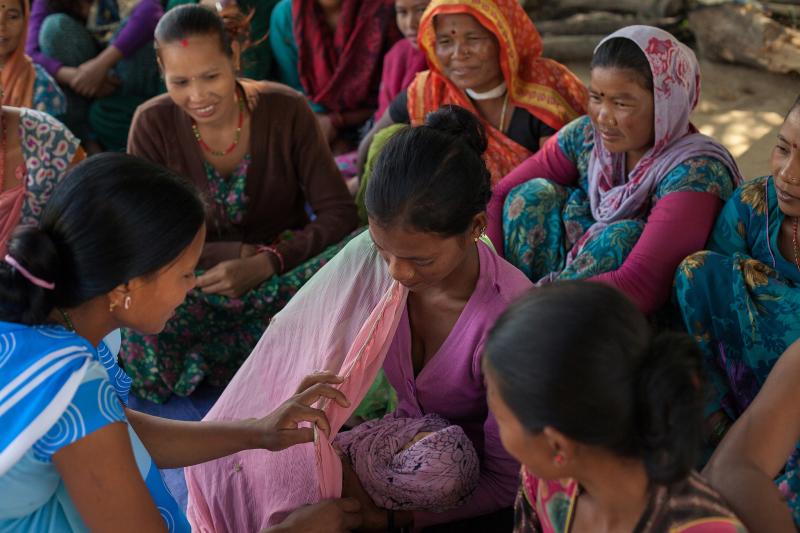Where We Work
See our interactive map


A community health worker councils a group of women, including expectant mothers and those who have recently delivered, on good health practices in Binauna village, in Nepalís Banke District. Photo courtesy of USAID / CC BY-NC.
We stand at a critical inflection point in the fight to end preventable maternal mortality.
This piece originally appeared on Devex.
The Lancet recently reported that if high-quality health systems were in place in 137 low- and middle-income countries, maternal deaths would decline by half.
So, how do we get there? How do we ensure that every woman has access to quality health care before, during, and after childbirth; that she and her newborn are not made to suffer from a preventable and treatable maternal health complication; that she is given the best possible chance of surviving — and thriving in — motherhood?
Nigeria has one of the highest maternal mortality rates in the world; a complicated relationship between traditional birth attendants and government means women are losing out on medical care.
This is a complex and urgent question. We stand at a critical inflection point in the fight to end preventable maternal mortality. More than 99 percent of maternal deaths occur in LMICs, with almost two-thirds in sub-Saharan Africa.
In Sierra Leone, it’s estimated that more than1,300 women died for every 100,000 births in 2015 — more than six times the global average; a woman in Chad faces a 1 in 18 lifetime risk of dying from complications during pregnancy or childbirth — the 44 percent decline in global maternal mortalitybetween 1990 and 2015 was significant, but insufficient.
According to a new analysis of health-related Sustainable Development Goals, based on the pace of progress across countries from 1990-2017, it is projected that we will not even come close to reaching the SDG 3.1.1 target of fewer than 70 maternal deaths per 100,000 live births. If things continue as they are, we will barely make it past the halfway point. We must seize all available opportunities to accelerate progress for women’s health as we push forward on the broader global goal of universal health coverage.
As leading advocates, we surfaced a few ideas on how to do this — a set of guiding principles and priorities based on our different experiences and lessons learned on the ground through our maternal health initiatives:
An important starting point, and the key to all of this is to enable decision-making that is informed and responsive to local needs. And for this, we must invest in data. We need to count and understand every maternal death so that we can begin to address the root causes. Countries that haven’t yet done so must follow through on their commitments to implement maternal death surveillance and response. There are big gaps in this regard in Africa, where according to WHO, only half of the nations have operational maternal death surveillance and response structures.
The Bellagio Declaration identified that this is the moment for a health system quality revolution. More than 8 million lives — and $6 trillion — could be saved annually if systems consistently provided high-quality care. By ensuring access to quality care for women — not just during pregnancy and childbirth but across their life course — we can promote the health, well-being, security, and future prosperity of their children, families, communities, and countries. This “mom effect” is why we must keep maternal health front and center of the UHC conversation.
This post was authored by H.E. Dr. Joyce Banda, former president of Malawi; H.E. Dr. Bineta Diop, African Union special envoy on women, peace, and security; Dr. Mary-Ann Etiebet, lead and executive director at MSD for Mothers; Pape Amadou Gaye, president and CEO at IntraHealth; Dr. Edna Adan Ismail, director and founder of the Edna Adan Maternity Hospital and former foreign minister of Somaliland; Dr. Mariam Claeson, director of the Global Financing Facility.
Get the latest updates from the blog and eNews




